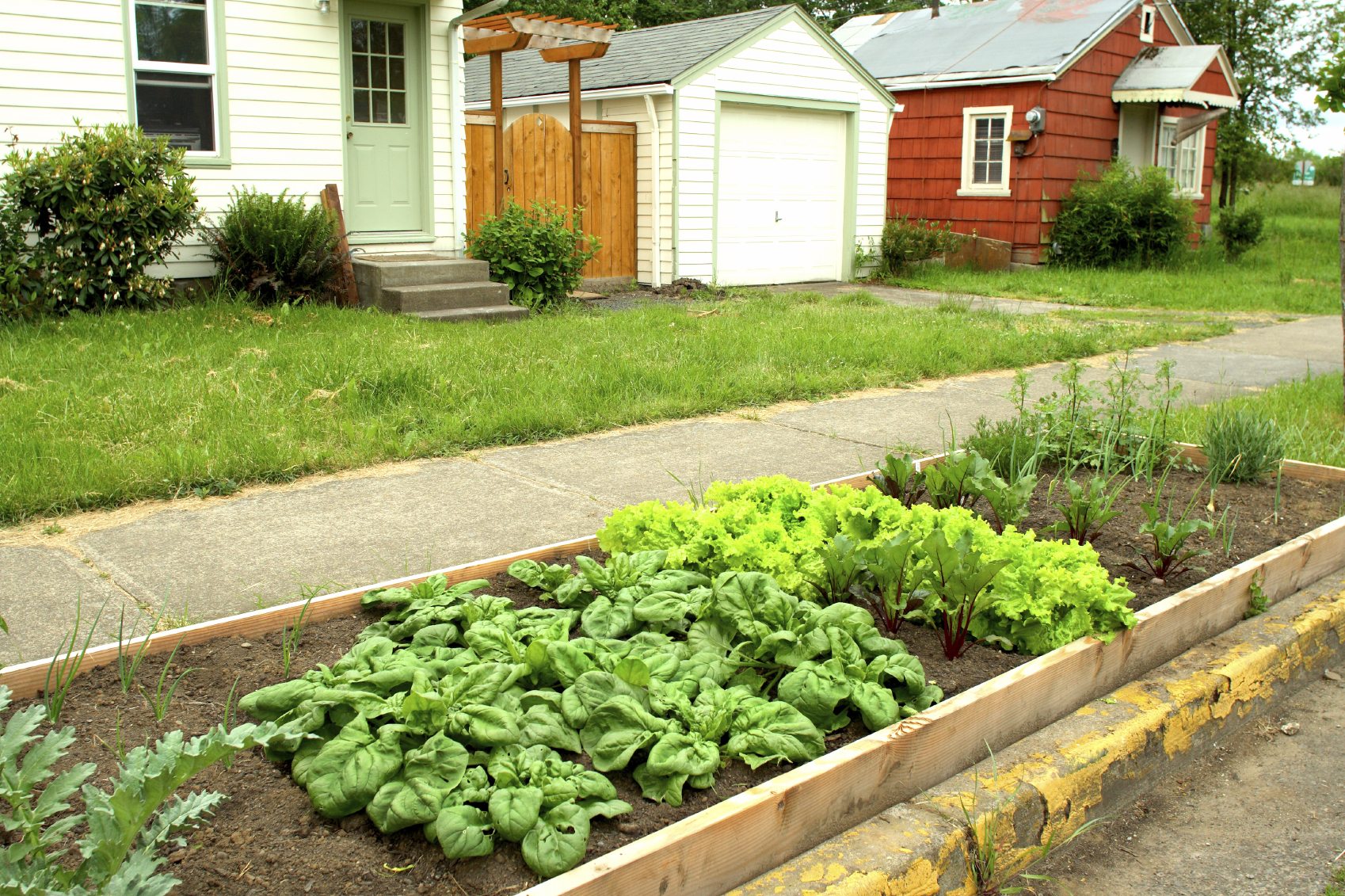Vegetable Sidewalk Gardening: Growing Veggies In A Parking Strip Garden

Currently, the parking strip in the front of our house has two maples, a fire hydrant, a water shutoff access door, and some really, and I mean really, dead grass/weeds. Actually, the weeds look pretty good. This area-- also known as the “hell strip,” and aptly named-- is a constant conundrum to many home owners. Fear not; you can beautify this area by creating a parking strip garden. Parking strip vegetable gardens, for instance, are all the rage for a number of reasons. Read on to learn more about vegetable sidewalk gardening.
Why Create a Parking Strip Garden?
Beyond the fact that many of our parking strips look awful, there are a number of reasons to revamp this area. Water scarcity and the increasing cost for irrigation are making it too costly to maintain, and maintenance it needs! The hell strip is usually a poorly conditioned area with compacted, nutrition-less soil that isn’t even owned by you but that you must maintain. People walk across it, dogs poop on it, and it is surrounded by heat reflected concrete and asphalt that can reach temps up to 150 degrees F. (65 C.)! Another reason to spruce up the hell strip is that more and more people are distrustful of industrially produced foods. Turning the area into a vegetable sidewalk garden would not only beautify the strip but provide your family with nutritious, healthy produce. These areas are also often the sunniest places in the yard, making them perfect to be turned into a parking strip vegetable garden.
Hell Strip Garden Plan
A word of caution when planting a parking strip; not all communities agree that this is such a great idea. Some prefer a manicured lawn with a tasteful tree or two. Check with your housing committee if you have one and investigate any local ordinances regarding environmental impact or safety concerns such as food and traffic safety. You'll need to determine your soil quality with a soil test. Once you have the pesky logistics worked out, it’s time to create a hell strip garden plan. You don’t want to rip out all that turf without a plan do you? Okay, maybe you do if it looks as bad as mine, but patience, as it could get worse if you don’t have a plan. If it rains, for instance, the hell strip would only be suitable for a mud-loving pig. First, decide if you want to plant the entire strip or just part of it. Are you going for a xeriscape look to minimize water usage or are you interested in a veggie and herb garden? Would you like a native plant garden or are you in love with perennial flowers? Mark the area, then prepare to sweat. It’s time to remove the turf. Use a sod kicker or shovel and dig down 3 to 4 inches (8-10 cm.) and level the sod out. If the soil is particularly packed, you may want to follow this up by running a tiller through it. Add plenty of compost at the same time or dig it in. Now you get to do the fun part-- put in the plants. What are suitable hell strip vegetable plants? Hell strip vegetable plants will be any veggie that you would plant in your regular garden plot. Veggies generally require full sun, along with adequate nutrition and water. The hell strip is usually the sunniest place in the yard and you took care of nutrition by amending the soil with compost. You might want to lay a drip line or soaker hose to make watering easier. Also, mulch around the plants to aid in water retention. You might also decide to build raised beds for your veggies. A raised bed allows you to plant closer together, which creates a sort of microclimate that conserves moisture as well as repels weeds. They can extend the planting season and since you aren’t walking on the soil, the roots of the plants have an easier time promoting big, strong, healthy plants. Raised bed planting often has higher yields than conventional veggie gardens and it’s easy on the back!
Sign up for the Gardening Know How newsletter today and receive a free copy of our e-book "How to Grow Delicious Tomatoes".

Amy Grant has been gardening for 30 years and writing for 15. A professional chef and caterer, Amy's area of expertise is culinary gardening.
